
by

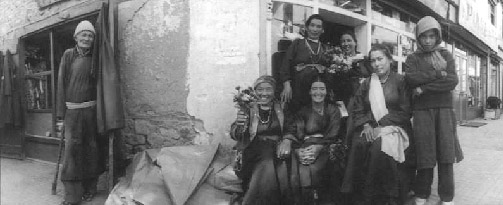
Liza
Linklater is one of the best photographers in this region, but as with most
Canadians she is not very good at blowing her own horn. Actually, she’s much
more than just a good photographer; she’s a good writer and editor as well and
a nice person to boot. She was raised in the booming metropolis of Kincardine,
Ontario, which, at the time, was a town of 2,800 souls, situated on the shores
of Lake Huron.
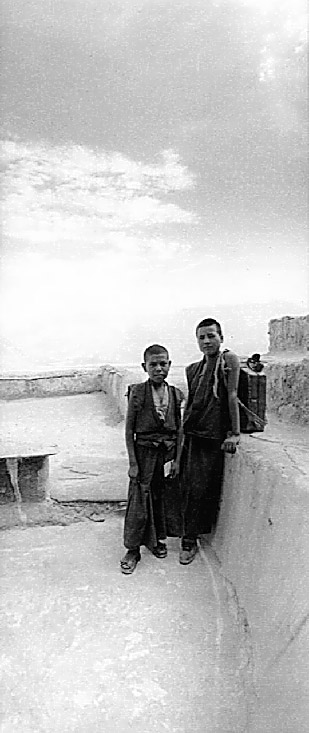 |
It’s
a long way from North America’s Great Lakes to the Chao Phraya River in
Thailand and it’s a long, fascinating story as well. Liza first came to Asia
on a backpacking expedition with her partner James Trottier in 1978-79. It was
the second time he had gone overland through Asia and the couple basically
followed the backpacker trial taking a cheap flight to England, hurrying through
Europe, passing into Turkey, then on through Iran (just before the Shah was
deposed) and Afghanistan (just before the Russians invaded), then Pakistan (just
prior to former Prime Minister Zulfikar Ali Bhutto’s execution), then India
(while Indira Gandhi cooled her heels in a jail cell having lost an election
after imposing emergency rule), next to Nepal, Thailand and finally Hong Kong,
before heading back to Canada. |
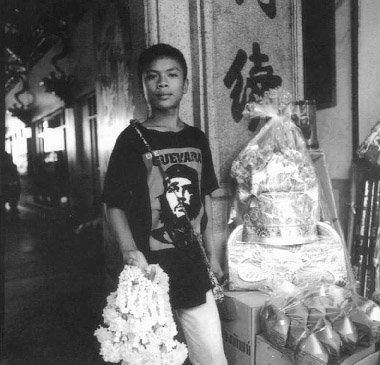 |
But Liza’s interest in photography had begun long before that trip. She displayed her love and aptitude for photography at an early age by taking photos for her high school yearbook. She then started her post-secondary career by attending Sheridan College, in Oakville, where she took a year of fashion and a year of photography. |
Next came a job as a photographer’s stylist, meaning she went on fashion shoots and made the models look perfect before they were photographed. She worked for a big commercial advertising studio in Toronto called Pringle & Booth, and although she traveled to places like Barbados and Portugal, she found the work limiting as she wanted to do real photography. “But in those days they didn’t really hire women. The photographers were using those huge studio cameras and they thought women would never be able to carry the equipment, or work it. And a few years previously women who were photographers were also forced to quit if they got married.”
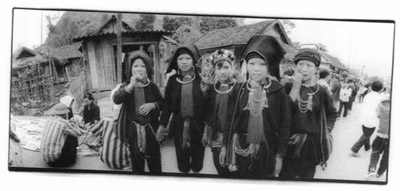
But
Liza persisted and she did get a job doing off-figure photography, which was
taking shots of clothes not on the models. But again, she found this confining,
so she deciding to go back to school and take an Honors B.A. in Social
Anthropology at York University specializing in South and Southeast Asia.
In
hindsight, she says, “Photography was my real love, but I didn’t find the
type of work I was doing to be intellectually stimulating. Commercial
photography really turned me off, it deadened my love of the art, and that’s
partly why I went back to university.”
She
followed her B.A. by taking a Master of Arts, again at York, with her thesis
focusing on Social Anthropology and Photography. The thesis dealt with visual
anthropology and partially involved taking photographs and interviewing artists
in downtown warehouses; back when people were first living in them – before
they became trendy.
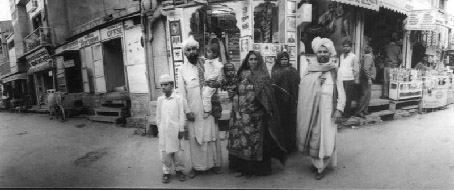
But
before taking her M.A., Liza and her partner of 25 years, James Trottier, who
just happens to be the number two man at the Canadian embassy, holding the post
of Political/Economic Counselor, went on that overland trip to Asia.
The
couple actually met while Liza was taking her undergraduate degree at York. She
was working part-time at the University of Toronto library and used to observe
James from afar every Friday night when he would come in to do research for his
M.A. degree in History. The next year they bumped into each other at the student
loan office at York, and Liza said, “What are you doing here?” James
explained he was now attending Osgoode Hall Law School, the couple dated, and
the rest is history.
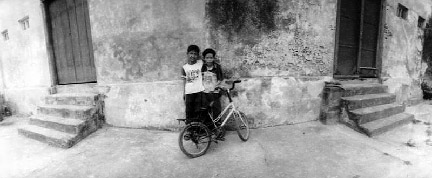
So
in many ways it was James, who furthered Liza’s fascination with Asia, by
taking her backpacking across Asia, while taking a year off from law school
himself. Liza had gone back to work at her old photography studio, and James
drove a taxi part-time, to earn the money for the trip.
Then after returning from Asia and getting her Master’s, Liza starting doing freelance photojournalism, and as she liked combining her writing and photography, she started to chose jobs that allowed her to do both.
In 1982, the couple moved from Toronto to Ottawa when the Foreign Service hired James. They were only there for about nine months before they were posted to Thailand in February of 1983, where they stayed for two years. (Fred Bild and John Paynter were the ambassadors back then and the current ambassador, Andrew McAlister was a First Secretary.)
During that period, they traveled extensively and Liza worked as a photographer for other writers having her photos published in magazines like Asiaweek and the Far Eastern Economic Review. But as she traveled more, she started writing articles herself mainly so she could get her own photos published. She had had previous experience as she had written articles for other magazines and for a photo magazine called Photo Canada, about her trek across Asia
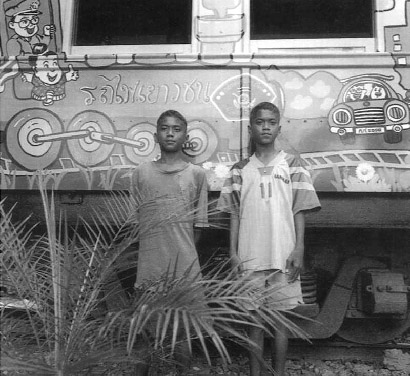
James did his first tour of duty at the Canadian Embassy in Bangkok working with refugees, spending a lot of time in the camps at the Thai-Cambodian border and Liza would sometimes accompany him and take photographs and write stories on their journeys. They also went to Ho Chi Minh City back when the only foreigners there were Russians, and she managed to get some stories out of that trip as well, because hardly any reporters were covering Vietnam at the time. Liza also teamed up on a number of articles with a fellow diplomat’s wife, Robin Pascoe, who was actually a journalist with CBC before her husband took a posting to Bangkok.
Then when James and Liza headed back to Canada, she decided to enroll in Carleton’s School of Journalism taking a one-year Bachelor of Journalism (Honors) Degree, while James continued his work with human rights and refugees.
After
graduating from Carleton in 1986 she then worked for a few years at magazines in
Ottawa. She worked for Ottawa Magazine,
Ottawa Woman and Ottawa
Business Life, all of which were connected to Toronto Life. She liked it because it allowed her to do her
freelance articles, some photography and work as an editor as well. “The
problem was I didn’t make very much money, but I loved it and it was probably
one of the nicest jobs I’ve ever had.”
Then
in the late ‘80s she started getting writing contracts with CIDA’s Public
Affairs section: writing backgrounders, annual reports and country profiles and
this quickly became a full-time job. In 1990, James was posted to New York City,
to Canada’s Mission to the UN where he dealt with global human rights issues,
so the couple moved to the Big Apple for four years. With the advance in
computer technology, Liza could still do her work for CIDA and send it in; and
if a problem arose, since NYC wasn’t very far away, she could easily commute.
She
then got a chance to do a project for Citizenship and Immigration Canada, which
enabled her to cross Canada interviewing refugees and immigrants for a
magazine-style publication called Canadian
by Choice, which was celebrating the 125th anniversary of
immigration to Canada. First, she had to locate the potential interviewees, and
she did this by finding out where the largest ethnic groups were centered and
then contacted the heads of their respective communities. Next she traveled out
to photograph them and talk to them about their lives in Canada and in their
native countries.
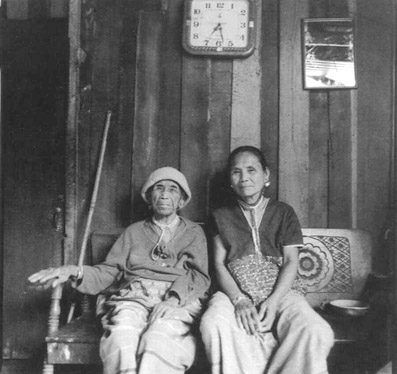
A couple of years later, she did a similar project, again for Citizenship and Immigration Canada. She went back across the country, this time interviewing the children of immigrants and refugees for another magazine-style publication called New Friends. As Liza says, “this was done to raise awareness of their struggles and heartbreaks, successes and future dreams.” The National Film Board of Canada, as part of a multimedia kit called Destination Canada, distributed this across Canada.
Then she went back to writing reports for CIDA, Citizenship & Immigration and Foreign Affairs. All of these reports had to do with other countries or people that came from other countries, but this made sense given her training in anthropology. For two years before she returned to Bangkok in 1998, Liza worked for Foreign Affairs as a Communications Officer, dealing with international forestry issues.
The couple arrived for their second tour of duty in Thailand in September of 1998. Actually, they had come back once before in 1986, when Liza, while in journalism school, had won a cross-Canada Southam News photo competition for a photo she had taken of a man in a skiff at the Jakarta port, and as a result had won two round-trip tickets to Asia on Air Canada.
But by the time their second tour rolled around, Liza was overwhelmed by how much Bangkok had changed. It is now much more plugged in internationally. Initially, she had wanted to do more travel writing, but from the minute she arrived she was asked to do more work for CIDA. For the last two-and-half years she has worked with Christine Munro, the Canada Fund Coordinator at the Canadian embassy, on a book celebrating twenty-five years of Canada Fund projects in Thailand. This was recently published to rave reviews. During that time, Liza also submitted articles to Voyageur and produced a brochure and newsletters for SEAFILD, CIDA’s regional human rights, good governance, and democratic and legal development initiative.
Where
will the couple go next? “We’re not sure, but political officers don’t
often get cross-postings like those in immigration, trade or admin, who can
usually go from country to country. Ottawa usually wants political officers to
return home for a spell after a foreign posting.”
And
what about James becoming an ambassador some day? “Who knows? But Bangkok has
provided a great opportunity for him to be responsible for many aspects of
running an embassy.”
Back
to Liza: in Asia her work has not only appeared in Far
Eastern Economic Review and Asiaweek,
but in publications such as the Bangkok
Post, Living in Thailand, Sawasdee,
Look East and Far East
Traveler, while back home her work has been published in the Globe
and Mail, the Toronto Star, the Financial
Post, Southam News Service, Now,
the Ottawa Citizen and Photo Canada to name a few.
She has also done publicity work for a number of organizations in Canada.
And she just happens to have a black & white photographic exhibition called Bangkok and Beyond: Portraits & Panoramas, which will on display at the Foreign Correspondents Club of Thailand from Dec.1 –31. This will be part of a citywide photo event called “The Month of Photography,” which is being staged by the Alliance Francaise in Bangkok and the European House of Photography in Paris. Liza’s square-format portraits of Thai people taken in Bangkok and Thailand form part of an on-going series on Thai society. The panorama-format portraits were taken on various trips to Bhutan, India and Vietnam over the last two years. Liza has had thirteen group and three solo shows in Canada, but this will be her first in Asia.
During her travels Liza used medium-format cameras, one square and one panorama for her black-and-white work. “Because of the weight of these cameras, I could only take one on each trip. I tend to use the Noblex (a big German camera with a rotating lens, which you don’t focus), for the panorama shots, outside Thailand; and the Broncia (like a Japanese Hasselblad), for the square-format shots, inside Thailand. I ask the Thais some basic questions about their lives to accompany each photo. On trips I always carry one or two 35 mm cameras as well for colour slides and negatives.”
“I
hope that my respect and affection for Asian people is reflected in the photos
on display at the FCCT. As a Canadian, and an outsider in all of these
societies, I always want to know more about the people I see and meet when
traveling, or just walking around Bangkok. Before taking these black-and-white
portraits I always ask permission beforehand. The thing I love most about
photography like this is that it allows me to enter the lives of strangers even
for a few minutes.”
If
you get a chance, see Liza’s work, you’ll like it, and you’ll agree with
me, she’s one of the best “shooters” around.
Contact
Info:
Tel:
09-890-6695.
E-mail: lizalink2002@yahoo.com
FINIS